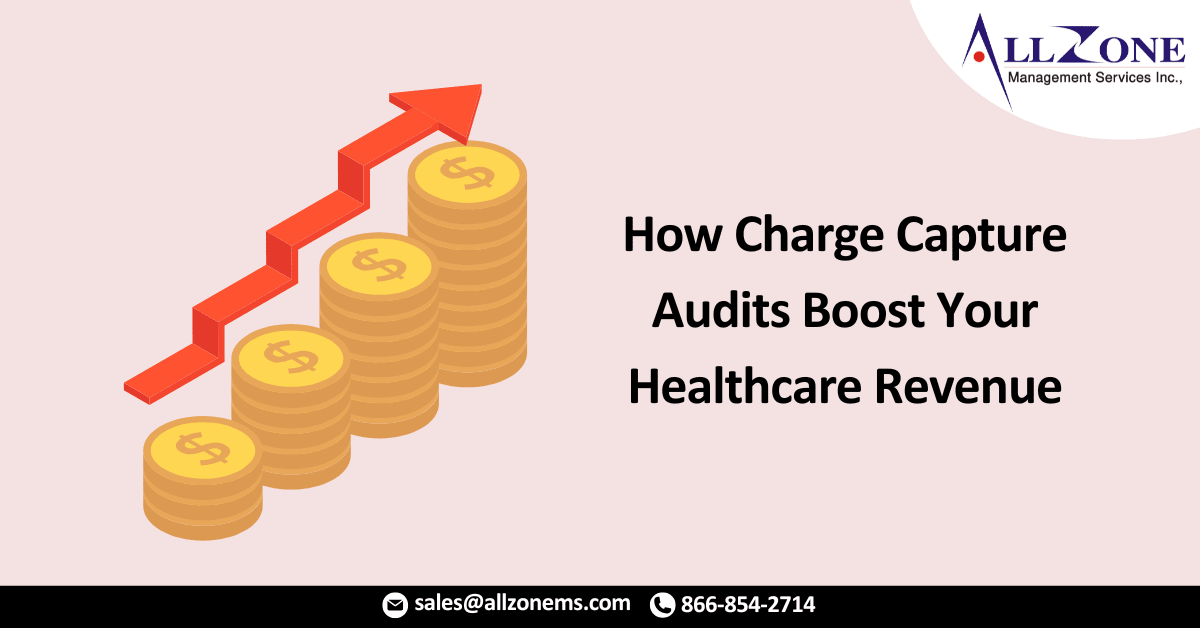The healthcare industry holds hidden potential for improved revenue and streamlined operations. Charge capture audits act as your key to unlock these hidden treasures. Similar to explorers seeking buried riches, healthcare organizations can embark on a quest for financial stability through these audits. This guide will explain charge capture audits, help you identify hidden opportunities, and provide a roadmap for implementation.
What are Charge Capture Audits?
Imagine a comprehensive review of your entire revenue cycle, from the moment a patient schedules an appointment to receiving payment. That’s what a charge capture audit is. It delves into every step – verifying patient insurance, accurate coding, and proper billing – to identify any gaps that might be causing lost revenue. By conducting these audits effectively, you can unearth hidden gems – missed charges, inefficient processes, and potential compliance issues – that can significantly improve your financial health.
The Advantages of Charge Capture Audits
Healthcare revenue management isn’t always smooth sailing. According to the Healthcare Financial Management Association (HFMA), poorly managed charge capture processes cost medical practices an average of $125,000 annually. Hospitals, on average, lose up to 1% of their net charges – millions of dollars! – due to these inefficiencies.
Charge capture audits offer a powerful solution, delivering four key benefits:
- Maximize Revenue: Audits identify and correct errors, plugging leaks and maximizing your revenue streams.
- Stay Compliant: By ensuring adherence to payer guidelines, you reduce the risk of costly penalties.
- Streamline Operations: Audits help streamline processes, reducing administrative burden and boosting overall productivity.
- Enhance Patient Care: Accurate billing ensures proper reimbursement, allowing you to focus on providing excellent patient care without financial worries.
A Step-by-Step Guide to Charge Capture Audits:
Don’t be intimidated by charge capture audits! With the right approach, they can be a straightforward process. Here’s your roadmap to get started:
- Identify High-Risk Areas: Think of departments prone to documentation delays or billing issues. Cardiology, pediatrics, emergency services, and surgery are common examples. Focus on areas with high service volume or complex procedures.
- Map Your Current Process: Create a detailed checklist outlining each step in your current charge capture process. This helps identify potential weak points and guides your audit. Common pitfalls include inaccurate patient insurance information, missing documentation, medical coding errors, and gaps in billing records.
- Regular Audits are Key: The healthcare landscape constantly evolves, so regular audits (ideally within 3-5 days of service) are crucial to catch issues early and prevent revenue leakage.
- Catch errors early: Regularly review your charge capture process (ideally within a few days of service) to identify and address potential issues before they snowball into bigger problems and lost revenue. This proactive approach is key in the ever-changing healthcare landscape.
- Dig deeper: Once you’ve identified areas for improvement, get to the root cause of the problem. Assemble a team of experts from finance, IT, billing, coding, and clinical departments. Their combined insights will help you understand why these issues occur and develop effective solutions.
- Take action: Based on your findings, implement changes to strengthen your revenue cycle. This might involve plugging revenue leaks, streamlining processes, and ensuring compliance with regulations. Finally, re-audit to measure the effectiveness of your improvements.
Optimize Healthcare Billing Efficiency with Allzone Charge Capture Solution:
Allzone Charge Capture Solution is a software tool designed to streamline and optimize the process of capturing charges in healthcare settings. It’s primarily used in medical practices, hospitals, and other healthcare organizations to ensure accurate and timely recording of patient charges for services provided.
Here are some key features typically offered by charge capture solutions like Allzone:
- Mobile Accessibility: Many charge capture solutions offer mobile apps that allow healthcare providers to capture charges at the point of care using smart phones or tablets. This ensures that charges are recorded promptly and accurately, even when providers are away from their desks.
- Integration with EHR/EMR Systems: Charge capture solutions often integrate seamlessly with Electronic Health Record (EHR) or Electronic Medical Record (EMR) systems. This integration helps to eliminate duplicate data entry and ensures consistency between charge capture and patient records.
- Coding Assistance: Some solutions offer coding assistance tools to help healthcare providers accurately code the services they provide. This can help ensure compliance with billing regulations and maximize revenue capture.
- Real-Time Reporting: Charge capture solutions typically provide real-time reporting capabilities, allowing healthcare organizations to track charges, monitor productivity, and identify areas for improvement.
- Audit Trail: A comprehensive audit trail feature helps ensure accountability and compliance by tracking changes to charge entries and providing a clear record of who made each change and when.
- Compliance and Revenue Optimization: These solutions often include features designed to optimize revenue capture and ensure compliance with billing regulations and payer requirements.
Allzone Charge Capture Solution, like similar offerings in the market, aims to streamline the charge capture process, reduce errors, improve revenue capture, and enhance overall efficiency in healthcare billing operations.

